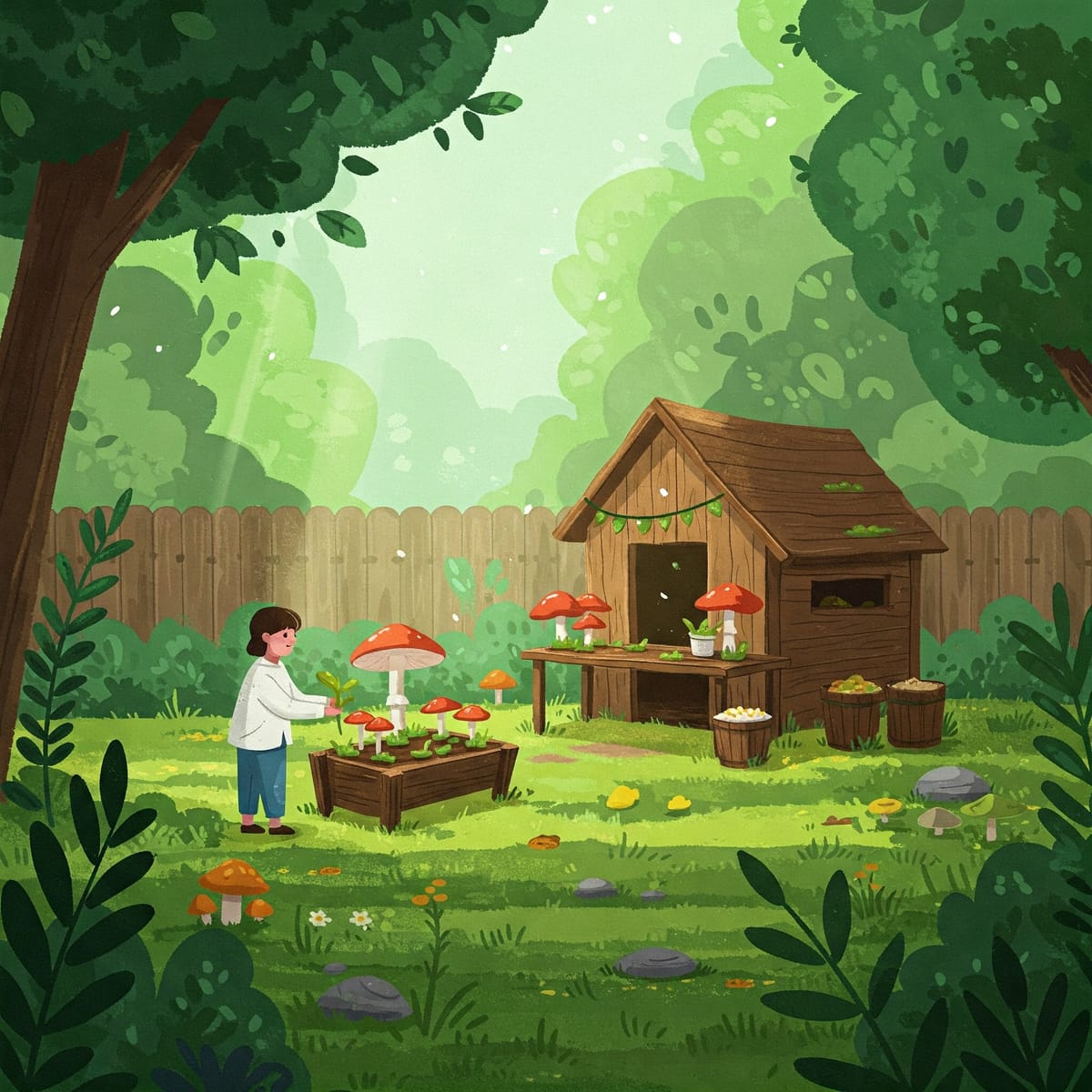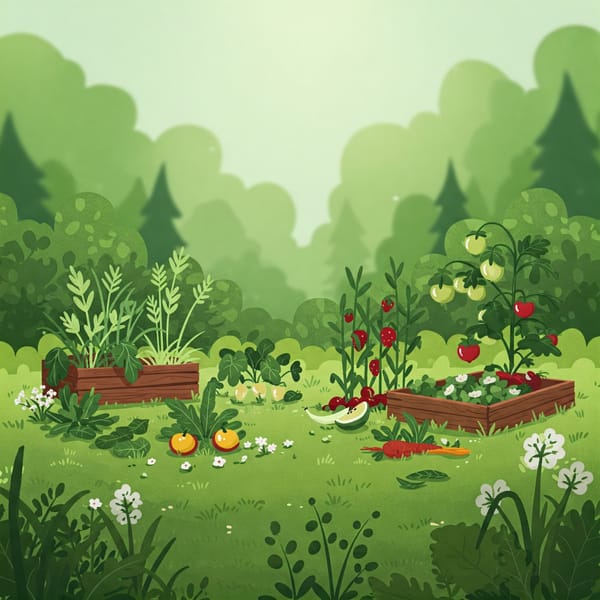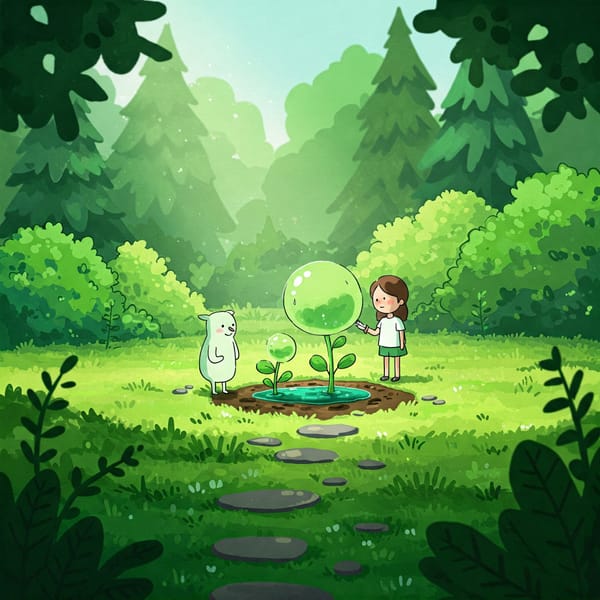Backyard Mushroom Farming: A Comprehensive Guide for Sydney

TLDR
Backyard mushroom farming is a growing trend in sustainable living, offering a unique opportunity to cultivate food in urban environments like Sydney. This guide provides a comprehensive overview of establishing a backyard mushroom farm, from selecting suitable varieties for Sydney's climate to sustainable cultivation practices and safety considerations. It covers various cultivation methods, including log inoculation, straw beds, and container gardening, along with tips for optimizing environmental factors, managing pests and diseases, and harvesting your crop. Additionally, it addresses legal and safety considerations, nutritional benefits, cost analysis, common mistakes to avoid, and resources for further information.
Backyard Mushroom Farming: A Comprehensive Guide for Sydney
Embracing Backyard Mushroom Cultivation in Sydney
The movement towards home food production and sustainable living has gained considerable momentum in recent years. Within this trend, backyard mushroom farming presents a unique and rewarding opportunity, particularly in urban environments like Sydney. Cultivating mushrooms at home requires relatively little space and, for certain species, can be surprisingly straightforward. This guide aims to provide a comprehensive overview of the practical aspects involved in establishing a successful backyard mushroom farm in Sydney, covering everything from selecting the right varieties to sustainable cultivation practices and safety considerations.
Selecting the Ideal Mushroom Varieties for Sydney's Climate
Choosing the appropriate mushroom species is the first crucial step for any aspiring backyard farmer. Several factors need to be considered, including Sydney's warm temperate climate, the ease of cultivation for beginners, and the desired culinary uses. Sydney generally experiences mild winters and warm summers, which influences the types of mushrooms that will thrive outdoors without extensive environmental control. However, indoor cultivation can expand the possibilities.
Oyster Mushrooms (Pleurotus spp.)
Oyster mushrooms are widely regarded as one of the easiest mushrooms for novice growers. They are saprotrophic fungi, meaning they readily grow on dead and decaying organic matter, making them well-suited for substrates like straw. Various strains of oyster mushrooms exist, each with slightly different temperature preferences, allowing for cultivation across a broad range of conditions.
For instance, Blue Oyster, Chocolate Oyster, and Lion's Mane strains tend to prefer cooler temperatures between 10°C and 24°C, while Pearl, White, Gold, and Pink Oyster varieties thrive in warmer ranges of 15-30°C or 18-30°C. This temperature tolerance makes oyster mushrooms a flexible choice for Sydney's varying seasons, and they can even be grown year-round indoors with some basic climate management. The adaptability of oyster mushrooms to different temperature ranges means that even with the natural fluctuations in Sydney's weather, selecting the right strain for the current season or creating a simple indoor setup can lead to successful harvests. Different oyster mushroom varieties possess distinct temperature optima. By aligning the chosen strain with the prevailing seasonal conditions in Sydney or by investing in a rudimentary controlled environment, growers can potentially cultivate these mushrooms throughout the year.
Shiitake Mushrooms (Lentinula edodes)
Shiitake mushrooms are another excellent option for backyard cultivation in Sydney, particularly using log inoculation methods. While they typically take longer to fruit compared to oyster mushrooms, they can provide a consistent supply of delicious mushrooms for several years from a single inoculation. The main strain of shiitake fruits between 14°C and 20°C, a range that aligns well with Sydney's climate. In Australia, shiitake has been successfully cultivated on various hardwood trees, including oak and smooth-barked eucalypts, which are readily available in the region. This makes log cultivation of shiitake a particularly relevant and sustainable choice for Sydney's backyard farmers, utilizing local tree species as a substrate. The fruiting temperature range of shiitake mushrooms corresponds favorably with Sydney's warm temperate climate. Furthermore, the proven success of cultivating shiitake on locally abundant hardwood species such as eucalyptus makes log-based cultivation a practical and ecologically sound method for backyard growers in the area.
Wine Cap Mushrooms (Stropharia rugosoannulata)
Wine Cap Mushrooms offer a unique opportunity to integrate mushroom cultivation directly into the garden beds. They are relatively easy to grow in garden beds using a mix of woody debris and straw as a substrate. Wine caps exhibit a broad temperature tolerance, growing in temperatures ranging from 10°C to 30°C, making them well-suited to Sydney's climate. Furthermore, these mushrooms are known to improve soil health as they decompose mulch, contributing to a more sustainable gardening system. Their ability to thrive across a wide temperature spectrum and their beneficial impact on soil quality make them a valuable and low-maintenance addition to Sydney's backyard gardens. Sydney's climate generally falls within the suitable temperature range for wine cap mushrooms. Their capacity to grow on common garden materials like wood chips and straw, combined with their ability to enhance soil health, positions them as a beneficial and sustainable option for backyard cultivation.
White Button Mushrooms (Agaricus bisporus)
White Button Mushrooms and their brown variant, often called Swiss Browns, are commonly found in kitchens and can be cultivated at home, although they require more controlled environmental conditions. The optimal temperature for their growth is between 17°C and 20°C. They also need high humidity levels, typically between 80% and 90%, along with good ventilation. While outdoor cultivation might be challenging in Sydney due to fluctuating temperatures and humidity, these mushrooms can be successfully grown indoors where these factors can be better managed. Achieving the specific temperature and humidity requirements for these mushrooms might necessitate an indoor or sheltered growing environment in Sydney.
Lion's Mane (Hericium erinaceus)
Lion's Mane is another interesting option for Sydney growers, particularly during the cooler months or in shaded, sheltered locations, as it prefers temperatures between 10°C and 24°C. Lion's Mane is available in easy-to-use grow kits, making it accessible for beginners, and it can also be cultivated on logs. It is important to keep Lion's Mane out of drafts to ensure optimal growth. The temperature preferences of Lion's Mane make it suitable for cultivation in Sydney, especially during the cooler parts of the year or in protected, shaded areas. The availability of grow kits provides a convenient entry point for beginners interested in this variety.
Table 1: Mushroom Varieties and Their Suitability for Sydney
| Mushroom Variety | Ideal Temperature Range (°C) | Preferred Substrate(s) | Ease of Growth | Notes for Sydney Climate |
|---|---|---|---|---|
| Oyster Mushrooms (various) | 10-30 (depending on strain) | Straw, sawdust, wood chips, coffee grounds | Easy | Many strains tolerate Sydney's climate; indoor growing possible year-round. |
| Shiitake Mushrooms | 14-20 | Hardwood logs (eucalyptus, oak) | Moderate | Well-suited for Sydney's climate; log inoculation is a good method. |
| Wine Cap Mushrooms | 10-30 | Woody debris, straw, wood chips | Easy | Tolerates Sydney's temperature fluctuations; good for garden beds. |
| White Button/Swiss Brown | 12-20 | Compost, manure | Moderate | Requires more controlled conditions, potentially indoors. |
| Lion's Mane | 10-24 | Logs, sawdust | Moderate | Best suited for cooler months or shaded locations; grow kits available. |
Practical Cultivation Methods for Backyard Mushroom Farming
Several practical cultivation methods are well-suited for backyard mushroom farming in Sydney, each with its own requirements and potential challenges.
Log Inoculation
Log inoculation is a traditional method, particularly effective for growing shiitake mushrooms, and it can be successfully implemented in Sydney given the availability of suitable hardwood trees. Oak and smooth-barked eucalypts are recommended for shiitake cultivation in Australia. It is important to avoid using ironbark, camphor laurel, anti-rot varieties, and softwoods like pine or bottlebrush. Fruit trees are also not ideal for mushroom production. The best time to cut logs for inoculation is during the tree's dormant season, which typically runs from autumn to early spring. Aim for logs that are approximately 1 meter in length and have a diameter of 10-15 cm. Once cut, the logs should be inoculated within a week or two.
The process of log inoculation involves several steps. First, drill holes into the logs using a 5/16 inch drill bit for plug spawn or a 7/16 inch bit for sawdust spawn. The holes should be about 1-1.25 inches deep and spaced 10-15 cm apart in a diamond pattern along the length of the log. Next, inoculate the logs with either plug spawn (also known as dowel spawn) or sawdust spawn; grain spawn is not recommended for log cultivation. If using plug spawn, simply hammer the plugs into the drilled holes using a hammer or rubber mallet. For sawdust spawn, a specialized inoculation tool can be helpful, although it can also be packed into the holes by hand.
After inoculation, it is crucial to seal the holes with melted wax, such as beeswax, soy wax, cheese wax, or even candle wax, to help retain moisture within the log and prevent contamination from other fungi. It is also advisable to wax the ends of the logs and any areas where the bark has been damaged.
The materials and equipment needed for log inoculation include hardwood logs, mushroom plug or sawdust spawn, a drill with the appropriate sized drill bits, a hammer or rubber mallet, wax, a wax applicator (which can be a simple dauber, brush, or even an old spoon), and a heat source for melting the wax, such as a hot plate or camping stove. The cost of these materials can vary. Hardwood logs might be free if you have suitable trees on your property or can obtain them from tree removal services. Mushroom spawn can range in price; for example, Rootlab offers log dowel spawn for around $25, while Little Acre sells 400 shiitake plugs for approximately $100. A basic drill and drill bits can be purchased for around $30-50 if you don't already own them. Wax can cost between $10-20. Many of the other items, like a hammer and a heat source, are likely already present in most households, or inexpensive DIY alternatives can be used for the wax applicator.
Potential challenges with log inoculation include the logs drying out, contamination from other fungi, slow fruiting, and pests. To prevent drying, keep the inoculated logs in a shady and moist location, and water them regularly if there is insufficient rainfall, especially during the initial spawn run. Stacking the logs off the ground can also help. To minimize contamination, ensure the logs are healthy when cut and inoculate them promptly. Thoroughly sealing the inoculation holes with wax is also crucial. Shiitake mushrooms can take anywhere from 6 to 18 months to begin fruiting, so patience is necessary. Once the logs are fully colonized, soaking them in water for 24 hours can sometimes trigger a fruiting cycle. If pests like insects become an issue, the logs can be protected with fine netting.
Straw Beds
Cultivating mushrooms in straw beds is another practical and relatively inexpensive method, particularly well-suited for oyster and wine cap mushrooms. Oyster mushrooms, in particular, thrive on straw, and wine caps also do well in straw mixed with woody debris. Even King Oyster mushrooms can be grown on straw, sometimes with the addition of a casing layer.
The process involves preparing and inoculating the straw. First, chop the straw (wheat, oat, or rice are good options) into smaller pieces, about 1-3 inches long. Sugarcane mulch can be used as an alternative if straw is hard to find, but avoid using hay as it contains seeds that can lead to contamination. The next crucial step is to pasteurize the straw to kill off any competing microorganisms. Two common methods for pasteurization are using a hot water bath or a cold water lime bath.
For the hot water method, soak the chopped straw and then submerge it in hot water (between 65°C and 82°C) for 1 to 2 hours. For the cold water lime method, soak the straw in water mixed with hydrated lime (about 0.2% solution, aiming for a pH of around 12) for 12 to 18 hours. After pasteurization, the straw needs to be drained and cooled to room temperature. Once cooled, inoculate the straw by thoroughly mixing it with mushroom spawn (either grain or sawdust) at a ratio of at least 10-15%. Ensure the spawn is evenly distributed throughout the straw. Finally, create a bed for the inoculated straw.
This can be done outdoors by layering the straw and spawn in a shady spot directly on bare ground or in a raised bed. Alternatively, the inoculated straw can be packed into containers like buckets, plastic bags, or poly tubing, making sure to create holes for the mushrooms to fruit from.
The materials and equipment required for a straw bed include a bale of straw, mushroom spawn (oyster or wine cap), a large container for pasteurization (like a large pot, drum, or tote), a heat source for the hot water method (such as a propane burner or stove), hydrated lime if using the cold water method, buckets or plastic bags if making container beds, and a spray bottle for misting. A straw bale can cost around $10-20 and might sometimes be sourced for free from local farms. Mushroom spawn can start at around $10 from suppliers like Rootlab. Hydrated lime costs approximately $15-25 per bag. Buckets and plastic bags can often be obtained for free from cafes or other businesses. If using buckets, a drill with a ½ inch bit might be needed if you don't already have one.
Potential challenges with straw bed cultivation include contamination, the straw drying out, and pests. Proper pasteurization and maintaining a clean environment during inoculation are key to preventing contamination. Using a higher spawn rate can also help. To prevent the straw from drying out, regular watering or misting is necessary. Outdoor beds can be covered with a tarp during dry periods to retain moisture. While pests are generally less of an issue outdoors, monitor for slugs and snails. Ensuring even distribution of spawn and consistent moisture levels can help promote more uniform fruiting.
Container Gardening (Bucket Tek)
The "bucket tek" method is a compact and efficient way to grow mushrooms, particularly oyster mushrooms, in a backyard setting, especially in urban areas like Sydney where space might be limited. Oyster mushrooms (white, pink, blue, yellow) are ideally suited for this method due to their tendency to fruit from the sides and their overall hardiness. Lion's Mane can also be grown using this technique.
The process involves using food-grade 5-gallon buckets, which can often be obtained for free from cafes or restaurants. Clean the buckets thoroughly before use. Drill ½ inch holes around the circumference of the bucket in a diamond pattern. These holes will serve as points for the mushrooms to emerge and also provide airflow. Straw is an excellent substrate for oyster mushrooms in buckets, but sawdust, wood pellets, and even coffee grounds can also be used. The chosen substrate needs to be pasteurized using either the hot water or cold water lime method, as described for straw beds. After pasteurization, drain and cool the substrate. Inoculate the cooled substrate by layering it with mushroom spawn (grain or sawdust) inside the bucket, aiming for a spawn rate of around 5-10%. Once the bucket is filled, place the lid on and incubate it in a dark, cool place (around 18-24°C) for 2 to 4 weeks. During this time, the mushroom mycelium will colonize the substrate, turning it white. When the substrate is fully colonized, move the bucket to a location that receives indirect light and has good humidity to encourage fruiting. Regular misting will be necessary to maintain the required humidity levels.
The materials and equipment needed for bucket tek include 5-gallon plastic buckets, a drill with a ½ inch bit, substrate (straw, sawdust, etc.), mushroom spawn (oyster or lion's mane), a large container and heat source for pasteurization, a spray bottle for misting, and optionally, micropore tape to cover the holes during the colonization phase. Buckets can often be free, while a drill bit might cost around $10-20 if you don't have one. Substrate and spawn costs are similar to those for straw beds. Micropore tape costs around $10-15 per roll.
Potential challenges with bucket tek include contamination, insufficient humidity, the substrate drying out, and side pinning. Similar to straw beds, proper pasteurization and a clean inoculation process are essential for preventing contamination. Regular misting is crucial for maintaining humidity, and placing the bucket in a naturally humid area like a bathroom or near a pond can also help. Avoid making the fruiting holes too large to prevent the substrate from drying out. Ensure the substrate is packed firmly into the bucket to minimize the space between the substrate and the bucket walls, which can encourage side pinning. Using a rubber band around the colonized block can also help prevent this issue.




